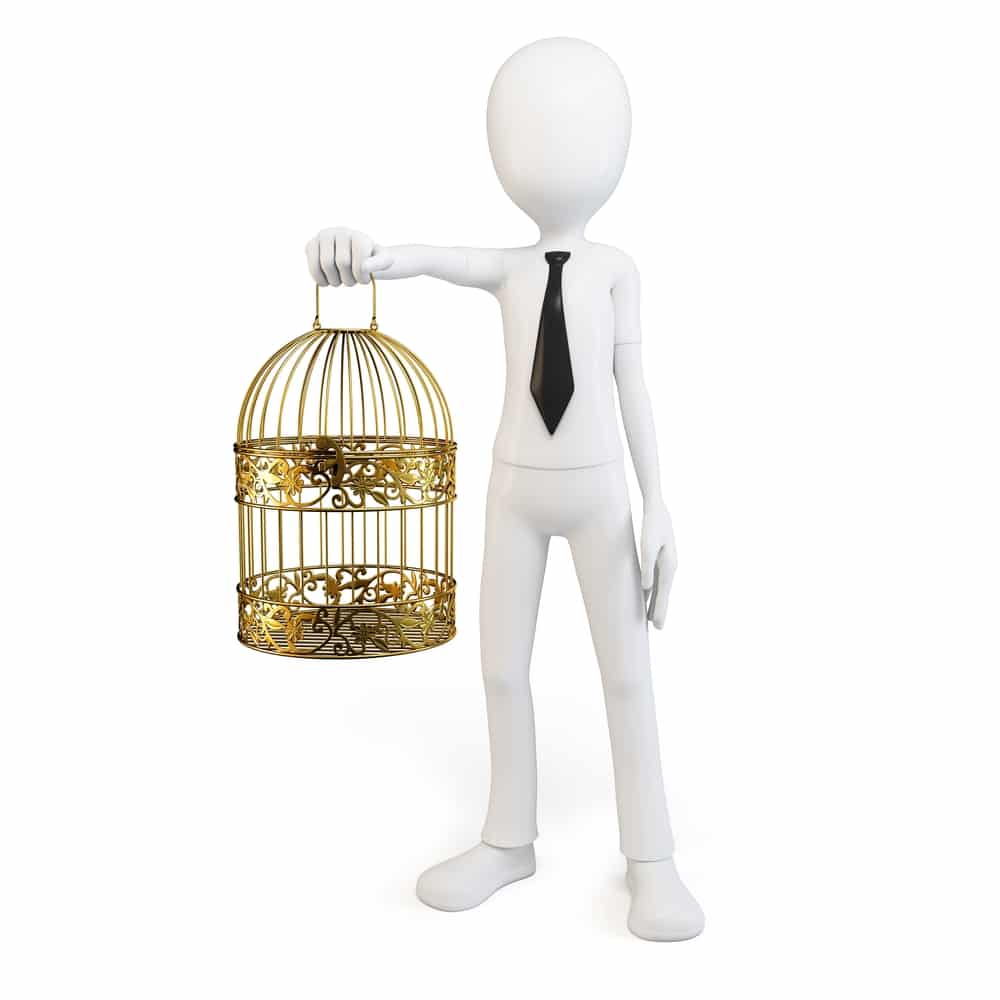Is Your Business Locked in a Golden Cage?

 If Steve Jobs were still running Apple, would the map application released with the iPhone 5 have been so disappointing? This mishap contains a subtle yet powerful lesson that can make your company even more successful over the long-term.
If Steve Jobs were still running Apple, would the map application released with the iPhone 5 have been so disappointing? This mishap contains a subtle yet powerful lesson that can make your company even more successful over the long-term.
As Apple’s top leader, Jobs was a notorious perfectionist, having zero tolerance for mediocre products. According to his biographer Walter Isaacson, when Apple released the poorly performing MobileMe, Jobs gathered the team together in an auditorium, confronted them, and publicly fired their leader on the spot.
Honest Mistake or Telling Symptom?
It is well understood that the iPhone 5 contains little innovative technology. Most of the apparent innovation is simply a new way to present old technology. Since maps are a critical feature on smart phones, replacing the gold standard of Google’s map application with an inferior application Apple owns might be a rare but benign misstep.
However, it may also be the first surface symptom of a dangerous shift in priorities within Apple’s senior leadership team that began with Jobs’ passing and that may even now be trickling down into several of the organization’s departments.
Apple has a profitable business model to defend and much to lose. The management team is fearful of challenging Jobs’ legacy and does everything in its power to defend it. However, instead of Jobs’ first instinct of discovering and using innovation in new ways, the remaining leadership wants to preserve the status quo of the good life they enjoy, including high ranking job titles, impressive six to seven figure take home pay, and rich stock option packages.
Good Instincts Mean Healthy Paranoia, Even When Successful
Seasoned operating leaders who prosper over the long-term have taught themselves that when their firms reach the peak of financial success, their instincts must kick-in to change products about every two years before the market demands they do so. These highly successful leaders have learned from unpleasant experiences early in their careers, when one of their own cherished successful business models entrapped them a golden cage.
They know that in every industry and sometime in the life of every company, the management team realizes that a certain product has become a large money maker and a feeling of invincibility sets in, leading to an overwhelming urge to protect those existing money-making products and services.
I know of no sadder example of this than Xerox. It’s Palo Alto Research Centre (PARC) produced the groundbreaking Alto, the first working personal computer (PC), including mouse, GUI interface, menus, icons, and Ethernet connectivity over local-area networks. Yet they never manufactured a Xerox PC. The people in the C-level suite at Xerox viewed this product innovation as threatening their status quo, based on coining lots of money from making copiers. Like Xerox, many companies blindly continue to promote current products at the expense of superior emerging innovation while tiny upstarts like Apple gladly make billions out of inspirations like PARC’s PC.
Now Apple is king of the hill and is behaving in a similar manner. By spending a large amount of money, time, and distraction in its patent litigation with firms like Samsung and HTC, it is attempting to protect its image and products by using litigation as a legal moat. Although this popular business myth makes management feel good, at best it results in short term protection, especially with products based on technology. The surface symptoms continue with Apple forcing its customers to use its own map application on the iPhone 5 when they know it’s inferior to Google maps.
Once a company opens a divide between what customers want to buy and what it wants to sell, customers become vulnerable to enticing offerings from more customer-centric rivals such as Apple used to be. Think of Blackberry, which once reigned supreme in the smart phone market. Today its products and market share have been largely taken over by Apple and Samsung.
Even before Jobs passing, Apple’s main thrust had been shifting toward protection of its business model. Despite his genius, Jobs’ extreme self-assurance and stubbornness could not keep him and his leadership team from lapsing into being comfortable with current products.
Conclusion
The natural lifecycle of businesses as they become larger and more successful is that the leaders become protective of the status quo. As they spend time and money to protect themselves, smaller, more nimble, hungrier rivals emerge with better innovation to win over their customers. A long period of stability allows risks to accumulate until there is a major setback for the business. Leaders must never allow themselves to get this comfortable no matter how successful they have become. They must always keep a healthy sense of paranoia so they can continue to drive their teams to make superior products that force other companies to keep playing catch up.
Has your company peaked like Blackberry and Apple?
The answer is to ask your management team, “Has our business model become a golden cage?”
_____________________________________________________________________________________
About the Author
Drawing on 28 years of management experience increasing shareholder value as a Co-Founder and CEO, Chas Klivans launched The CEO’s Navigator in 2001 and has helped dozens of management teams turn their businesses around from near failure to substantial success. Chas’s journey from an Afghanistan prison and the jungles of Peru to the board rooms of billion dollar corporations has enabled him to pioneer the business solution of Innovation2 , which uniquely increases financial results and at the same time builds management into an A-level team. Chas is a frequent trusted advisor, author, and speaker for corporations, Family Business Councils, trade associations, and Vistage.
Category: Innovation
Tags: Apple, Business, Innovation, Leadership

